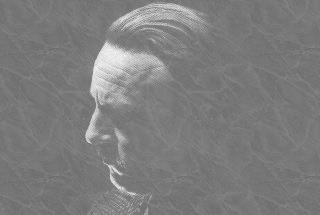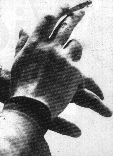

|

- A brief biography
- Childhood
- Musical studies
- A life as an artist
- Teaching
- Records
- Private life
- Anecdotes
- His last years
- Acknowledgements
-
Essential discography
- Isaac Albéniz
- Johann Sebastian Bach
- Ludwig van Beethoven
- Johannes Brahms
- Fryderyk Chopin
- Muzio Clementi
- Czerny
- Claude Debussy
- César Franck
- Baldassare Galuppi
- Enrique Granados
- Edvard Grieg
- Franz Joseph Haydn
- Franz Liszt
- André François Marescotti
- Federico Mompou
- Wolfgang Amadeus Mozart
- Sergej Rachmaninov
- Maurice Ravel
- Domenico Scarlatti
- Franz Schubert
- Robert Schumann
- Pellegrino Tomeoni
- Antonio Vivaldi
- Collections
- Criticism
- Links
- Disclaimer

Reviewers on Arturo Benedetti Michelangeli |
from Storia del pianoforte, by Piero Rattalino, Il Saggiatore, Milano, 1988 (pp. 328-329)
[...] Unlike Arrau, who fixes the range of dynamics within a homogeneous timbric field, Benedetti Michelangeli has at his disposeal, like Gieseking, like Horowitz, like Richter, a quite rich timbric palette, which he does not employ for purposes of stylistic definition, but to build the structure through the timbre. One may even compare Benedetti Michelangeli's style to Messiaen's postulates, such is his exactness in the choice of the timbre, fixed by him not only as a colour which orientates the listener's perception, but as a value per se. In that sense are to be intended the legendary cares which Benedetti Michelangeli poses in preparing his instrument, which gave rise to so many anectodes. We had put forward the hypothetical idea that the piano prepared by Cage could mime in a negative sense the preparations made by some performers, and we have haply also jokingly said that eventually the employment of sophisticated devices in Stockhausen's Mantra does not pursue an aim different from that of a prepared piano. On this point, Jonathan Cott elicited an exhausting and, in principle, faultless reply from by Stockhausen. So, although the preparation of the piano could raise the suspect of moody refinement and abstract perfectionism, actually Benedetti Michelangeli just intends to guarantee himself from any accident and chance in the production of the timbre, in order to obtain, employing a technique of the touch and a transcendental accuracy, a sonorous object relieved both from psychological and mechanical conditionings.
Benedetti Michelangeli's art presents paradoxical and hermetical aspects (together with elements of immediate and strong suggestion), which renders its critical analysis quite arduous. Harold C. Schonberg notes: ``His fingers cannot take on a wrong note or a dirty passage, more than a bullet could be deviated away from its path once it has been shot. Moreover, as one clearly understands from his execution of Gaspard de la nuit, he perfectly masters the timbric aspect. He is at any title one of the triumphs of modern pianism. What bewilders one in Benedetti Michelangeli is that in many of the pieces of his romantic repertoire he seems emotionally unsure of himself, and his way of playing, otherwise direct, is then charged with expressive artifices that disturb the flow of music.'' To these observations, that mirror the impression of any reviewer, one could add one more, e.g., about the meanness and lack of intimate cultural coherence of his repertoire. But all those aspects actually become negative when one considers Benedetti Michelangeli within the ruling and progressive cultural experience opened by Schnabel and prosecuted by Gieseking and Richter, whereas Benedetti Michelangeli's poetics evidences the project, albeit individualistic and solitary, of a supreme mannerism, spasmodicly aimed at making the musical work self-substaining.
That is a paradoxical and certainly extreme position, as extreme and paradoxical were the positions which Boulez and Stokhausen had coherently derived from Messiaen's premises, and a position in which, we think, Benedetti Michelangeli had many minor imitators and no follower. The interpretation follows above all the paths opened by Schnabel, progressively widening, at a level of ever more refined integration, the knowledge of history. But if this is a generalized datum, this does not mean the field to be uniform. Amongst the pianists that today are to be considered the highest exponents of our age, being Dinu Lipatti untimely disappeared in 1950, who would have been probably compared to Richter and Benedetti Michelangeli, we think that we can devise both positions at least partly different and open problems.
On Arturo Benedetti Michelangeli
His interpretative choice [is] intense, ingenious in each detail, so that in some moments his yield appears just like a point of arrival, in the quest for what the composer had prescribed and requested.My greatest regret is that he never performed contemporary music, neither in public nor in recordings. I remember a private performance of Schönberg's Opus 19, that revealed it to me as I had never heard before.
He was the greatest dominator of the keyboard that we ever knew.
composer and musicologist
Arturo Benedetti Michelangeli's art is marvellous, not for any particular characteristic, but for that ability to synthesis and that completeness that are the point of force of his personality.
composer
Nobody ever played better than Arturo Benedetti Michelangeli, who was the pianist of the century, without any doubt. I always thought that he was a modern pianist, for his detachment from the musical matter and even from the public, for his instrumental perfection and such a high and cool sense of style, able to communicate in the deep.
pianist
He has been the number one of the world pianism, unrivalled in Ravel's Concert for piano and orchestra, for example, and in Brahms's Variations on a theme by Paganini. They were unarrivable and one had the sensation never to have heard them before.
pianist
It was a stab in my heart, to know that my Maestro was dying in Lugano
while some days before I had been just in his city to direct Rostropivitch.
The Mestro taught very willingly and with passion. He always tried to
give the maximum to his disciples, even the least deserving ones.
director
Withe the death of Arturo Benedetti Michelangeli, music leaves one of the most extraordinary interpreters of our century. His absolute technical perfection, the magic of his touch, his fraseggio so personal and unmistakable made him a living legend.
director
Nobody like Arturo Benedetti Michelangeli ever had such a perfect relation with the black gran coda. As a musician, he held a position which remains unique and isolated, that to aspire at an absolute conception of music and sound, that is beyond time.
pianist
Besides having a musical nature of exceptional understanding, he was the only one to turn the piano from a percussion intrument into a magic instrument. Of him, I remember the mystery of the sound.
director
Michelangeli's playing [is] ... massive, firm, self-confident, and supremely even, both in articulation and in vertical balance.
in The American Record Guide, about the original issue of the Music & Arts CD-296 (1989).
There was something of the nekya [in Michelangeli's last concerts]: it seemed as if the public had in front of them not a living artist, but his provisional apparition, perhaps incarnation, of a legend so high and perfect that it could not belong to the world of the living.
critic